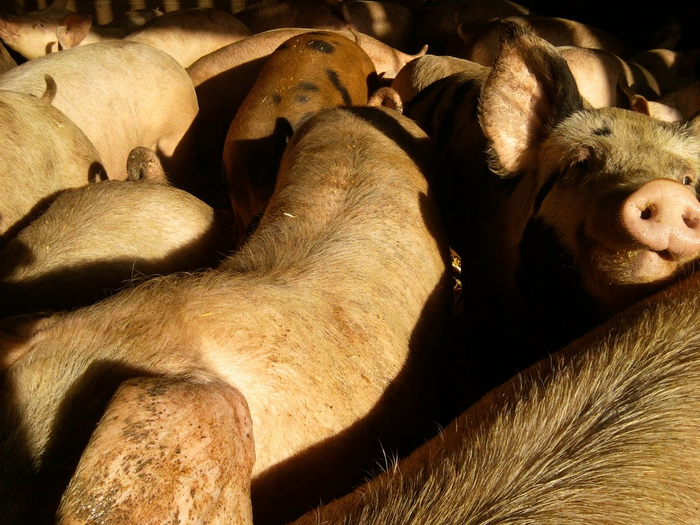Methicillin-resistant Staphylococcus aureus (MRSA) clonal-complex (CC) 398 is the dominant MRSA in European livestock and a growing cause of human infections. A new study fully characterizes the evolutionary dynamics of the mobile genetic elements—agents of horizontal gene transfer—whose presence or absence distinguishes CC398 from a closely related and less antibiotic-resistant human-associated population. To do this, the researchers used a collection of 1180 CC398 genomes, sampled from livestock and humans, over 27 years.

The results highlight the potential threat that this strain of MRSA poses to public health. It has been associated with increasing numbers of human infections, in people who have and have not had direct contact with livestock.
This work is published in eLife in the paper, “Stable antibiotic resistance and rapid human adaptation in livestock-associated MRSA.”
“Historically high levels of antibiotic use may have led to the evolution of this highly antibiotic-resistant strain of MRSA on pig farms,” said Gemma Murray, PhD, researcher at the Wellcome Sanger Institute. “We found that the antibiotic resistance in this livestock-associated MRSA is extremely stable—it has persisted over several decades, and also as the bacteria has spread across different livestock species.”
While livestock-associated CC398 is found across a broad range of livestock species, it is most commonly associated with pigs. Its rise has been particularly evident in Danish pig farms where the proportion of MRSA-positive herds has increased from less than 5% in 2008 to 90% in 2018.
“Understanding the emergence and success of CC398 in European livestock—and its capacity to infect humans—is vitally important in managing the risk it poses to public health,” said Lucy Weinert, PhD, a principal investigator in the department of veterinary medicine at the University of Cambridge.
The success of CC398 in livestock and its ability to infect humans is linked to three mobile genetic elements in the MRSA genome. The researchers reconstructed the evolutionary history of two particular mobile genetic elements—Tn916 and SCCmec—that confer antibiotic resistance in MRSA, and found they have persisted in a stable way in CC398 in pigs over decades. They also persist when CC398 jumps to humans—carrying with them high levels of resistance to antibiotics commonly used in farming.
More specifically, the team used a collection of 1180 CC398 genomes, sampled from livestock and humans, over 27 years to fully characterize the evolutionary dynamics of the MGEs. They found that “the emergence of livestock-associated CC398 coincided with the acquisition of a Tn916 transposon carrying a tetracycline resistance gene, which has been stably inherited for 57 years. This was followed by the acquisition of a type V SCCmec that carries methicillin, tetracycline, and heavy metal resistance genes, which has been maintained for 35 years, with occasional truncations and replacements with type IV SCCmec.”
The authors wrote that, in contrast, a class of prophages that carry a human immune evasion gene cluster have been repeatedly gained and lost in both human- and livestock-associated CC398. These contrasting dynamics, they said, mean that when livestock-associated MRSA is transmitted to humans, adaptation to the human host outpaces loss of antibiotic resistance.
In addition, a third mobile genetic element, φSa3, which enables the CC398 strain of MRSA to evade the human immune system, was found to have frequently disappeared and reappeared over time, in both human-associated and livestock-associated CC398. This suggests that CC398 can rapidly adapt to human hosts.
Antibiotic use in European livestock is much lower than it has been in the past. But the researchers said that ongoing reductions in antibiotic use on pig farms—due to recent policy changes—are likely to have a limited impact on the presence of this strain of MRSA in pigs because it is so stable.






